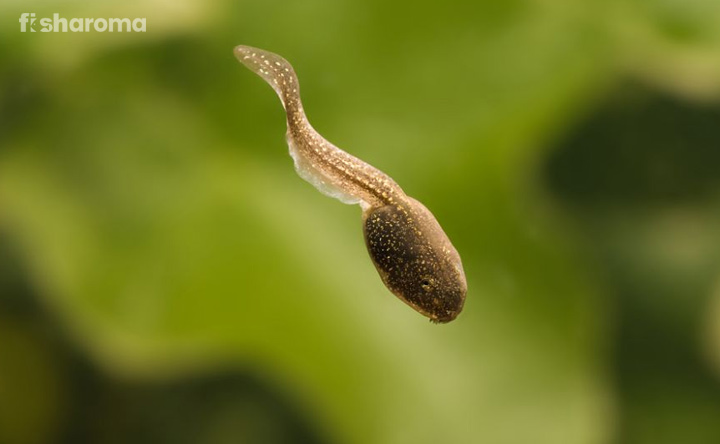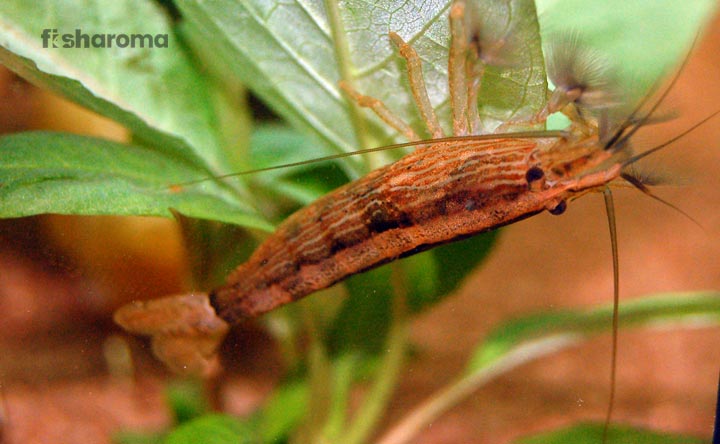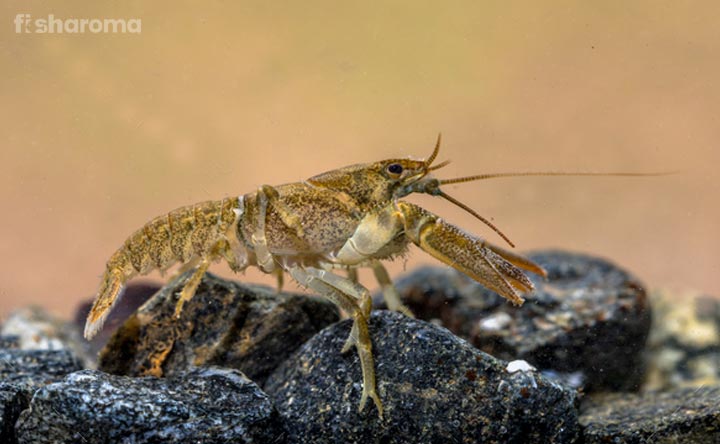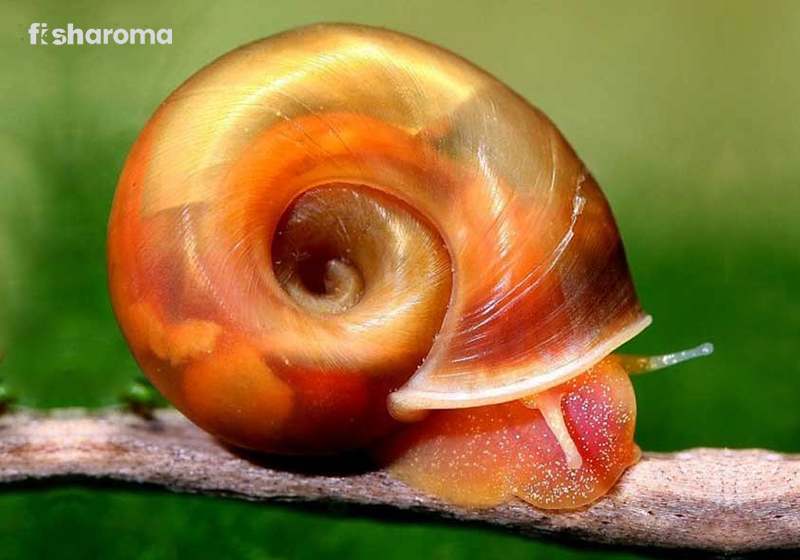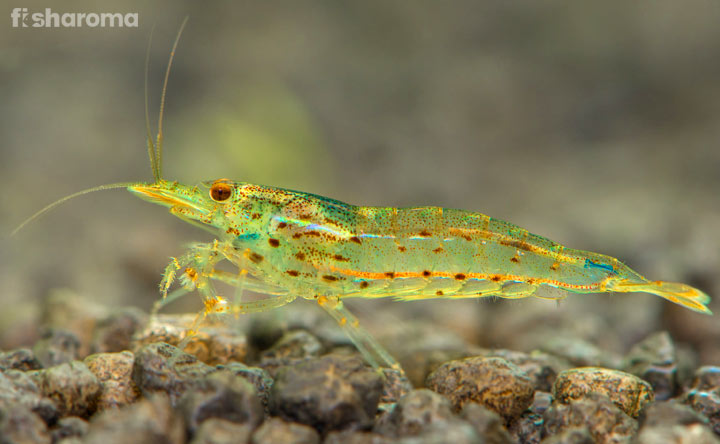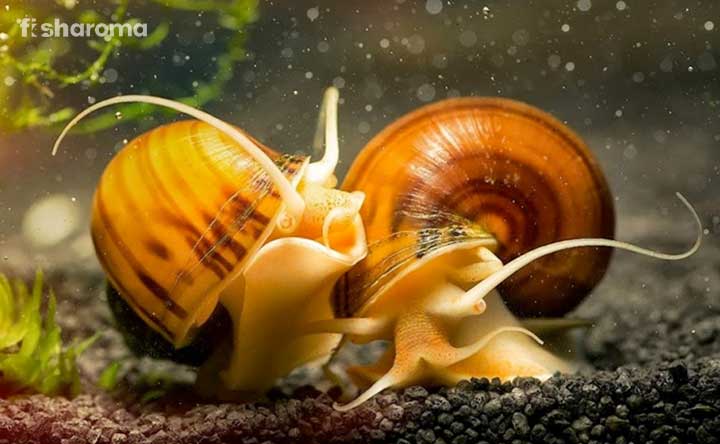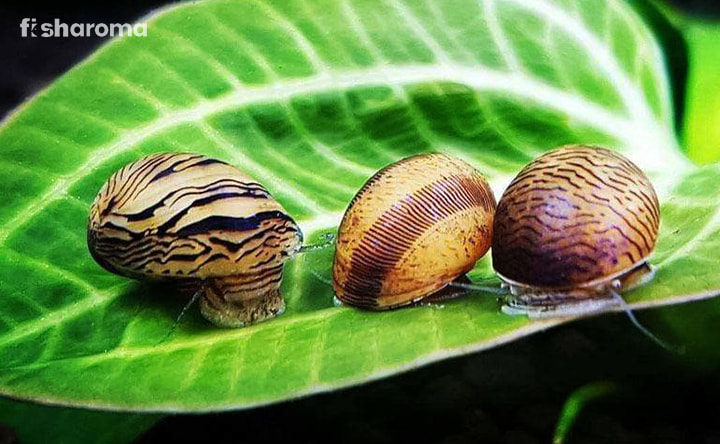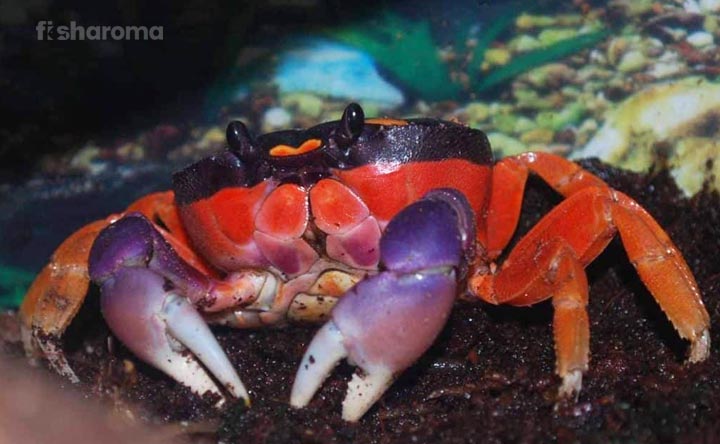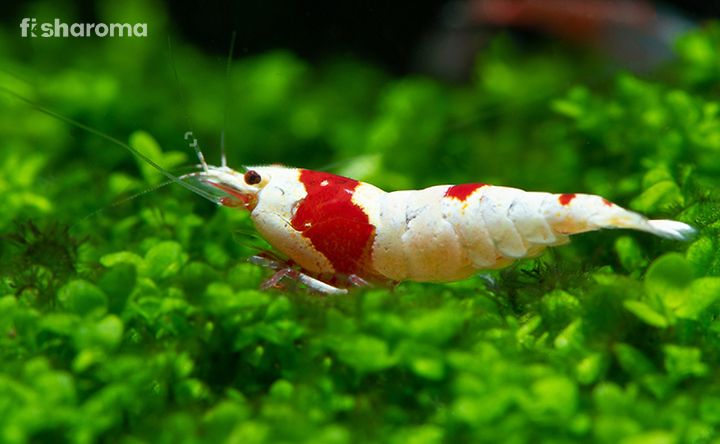Complete Care Guide to Pet Panther Crab at Home
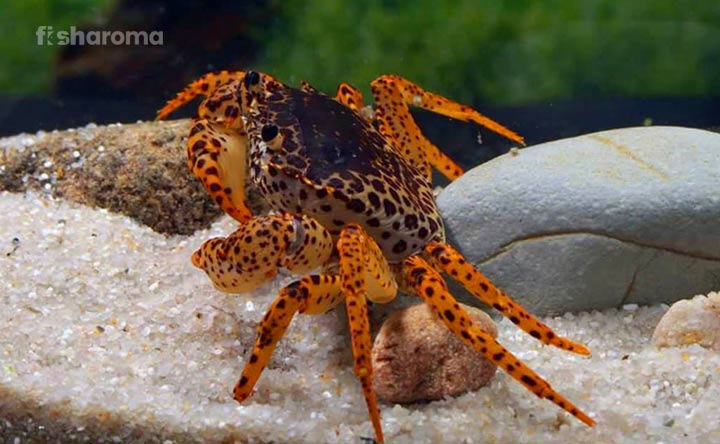
It goes without saying that having crabs in an aquarium is not less than having a majestic experience. Their amusing behaviour would keep you intrigued round-the-clock. But, rearing them in a home environment can be tricky. There are only very few types of crabs that fill up the criteria of being both aesthetically beautiful and being easy to rear.
One of them – the Panther Crab – is an extremely easy option to pet at home. In fact, even beginners can rear them without too much effort. Today, we are going to discuss everything related to their care guide – from their tank requirements to their dietary needs, from their habitat to their lifespan, from their behaviour to their breeding – we cover it all.
Key Specifications of Panther Crab
Before we get into the minute details, take a look at some of the key specifications of a Panther Crab from the table below.
| Scientific Name | Parathelphusa pantherina |
| Origin | Lake Matano, Sulawesi, Indonesia |
| Lifespan | 10 years |
| Colours | Orange with dark spots |
| Temperament | Territorial |
| Size | 5” (12 cm) |
| Diet | Omnivore |
| Family | Gecarcinucidae |
| Compatibility | Moderately low |
| Tank Size | 20 gallons (Minimum) |
| Care Level | Easy |
Overview
Members of the Gecarcinucidae family, Panther Crabs are freshwater crustaceans that are currently listed as endangered species due to their natural population being at risk due to nickel mining on lakeshores, where they usually live.
Human encroachment has also diminished their population over the years. Some theories are now being made that keeping them as pets at home can save them from going extinct from the human actions in the nature.
They are also known as Leopard Crabs because of the leopard-like spots on their bodies.
Origin & Habitat of Panther Crab
Panther Crabs are only found the Indonesian island Sulawesi, with their origin and majority population living in Lake Matano. A sizeable portion of their population can also be found in the area south of the lake as well.
Being a tropical creature, the water they live in is warm. They need access to a lot of sunlight and prefer little water movement. Their habitat is also dominated by a lot of rocky and woody debris and a sandy substrate. Although they live a fully aquatic life, you can see them venturing onto the shore at times.
Appearance of Panther Crab
Panther Crabs have a mesmerizing appearance. Once you see them in a pet store, it would be hard to not buy one. They have ten legs, including their claws and since their eyes are held up on stalks, it gives them a broad field of view. Their antennae, which are adjacent to their eyes, act as their sensory organs for smell, taste, and touch.
Size of Panther Crab
Panther Crabs are comparatively larger than most other freshwater crabs. If you just measure their carapace alone, they can be 3” (7 cm) long. When they stretch out their legs, their size can measure up to 5” (12 cm).
Colour of Panther Crab
Their distinct colours can elevate the overall aesthetics of your aquarium. They come mostly in shades of orange, although some variants can come in brown and yellow as well.
Evident by the name, their whole body is covered in small brown-blackish spots, including their claws and legs, similar to a Panther or Leopard. Since the spots are extremely dense on the carapace, the whole region can appear to be darker than the rest of the body.
Few rare variants also have red-tipped limbs.
Behaviour of Panther Crab
Panther Crabs are nocturnal beings, meaning you will find them usually being active at night. It is at this time you will notice them scavenging for food. However, in an aquarium setting, they would adjust to the time you decide to feed them.
Similar to every other crustacean, they also moult. Moulting is the process of shedding the existing exoskeleton to develop a new and large one, where the growing body can fit. Since it takes a few days for the new exoskeleton to harden up, these crabs remain extremely vulnerable during the first few days following the moulting process.
You will mostly notice them hiding during these times. This is why it is suggested to put rocks, castles, caves, and other hiding spots in the aquarium you keep them. We also recommend you to take the old exoskeleton out as soon as possible since there is a chance that the old one will dissolve in the water, which might alter the chemistry of the tank water.
These creatures are also territorial by nature. So, be sure to provide each of them ample space in the tank. They often can get into fights with each other over territorial claims. Their aggressiveness is accelerated when kept in a small space, especially when you keep more than one of them together.
They usually burrow small holes under things instead of digging deep burrows.
Lifespan of Panther Crab
In the wild, Panther Crabs can live up to ten years. But, in captivity, they usually live up to three years and if taken care well enough, they can live up to five years. They are a long-term commitment. So, be prepared.
Diet of Panther Crab
Being omnivores, the diet of a Panther Crab is extremely diverse. One of the best aspects about their diet is that they consume algae, detritus, and even leftover food items in your tank, thereby making sure your tank remains clean round-the-clock.
They are scavengers and you don’t really have to worry a lot about feeding them.
Ideally, live or frozen foods are great for them since their nutritional value is very high. Bloodworms and Brine Shrimps are good options here. Other than that, dried food can also be great for them. Algae wafers, flakes and pellets work well for them.
Keep mixing up their diet so that they don’t get bored. Feed them chopped up and blanched vegetables such as spinach, cucumber, carrots, and zucchini as well.
They can nibble on your live plants. So, be sure to keep only hardy plants in your tank if you don’t want your plants to erode away.
Another important element that they need is that of calcium. They need it for growing, developing, and strengthening their exoskeleton. You can provide them with Lancetfish or unshelled shrimps as they are rich in calcium. If you can’t find them, just feed them calcium supplements.
Feeding them 5-6 times a week will suffice as they would consume detritus and algae in the meantime.
Avoid any food that has any elements of copper in it as crustaceans can’t tolerate copper and Panther Crabs are no exceptions. Sometimes, plant fertilisers contain copper. So, if you are using one for your aquatic plants, check for the ingredient and make sure that it doesn’t have any copper in it.
Make sure to thaw the frozen food before putting them into the tank. On the other hands, dried foods must be well-moistened before putting in the tank.
Tank Requirements for Panther Crab
Let us now try and understand the tank requirements of this majestic species.
Tank Size
For a single Panther Crab, a 20-gallon tank will be enough. As they are territorial special, they need some space for themselves. Remember, the more space you offer them, the healthier they would be. When you keep more than one of them together, remember to provide each of them at least 30” (76 cm) of space. A rectangular long tank is the best option for them.
Tank Lid
Using a lid for your tank is a wise choice as that would prevent them from escaping the tank.
Substrate
As we stated earlier, their natural habitat has a sandy substrate. So, try and provide the same in your aquarium. The finer the grains of the sand will be, the easier it will be for your Panther Crabs to burrow holes in them.
Filter
As they live in slow-moving water, you don’t need a fancy filter for them. Just a standard filter that can generate slow current and aerate the tank water will get the job done. The oxygen level should be 6.93 mg/l. You don’t need an aqua pump for them. A sponge filter is a good option here.
Ornaments
Decorate your aquarium with rocks, gravels, castles, caves, and stone. These would serve as excellent hiding spots for your Panther Crabs. They especially need them during and after moulting. If you have multiple Panther Crabs in your tank, provide each of them with at least one large or major décor item. This will help establish their territory.
Presence of Flora
This can be viewed in two different ways. Firstly, Panther Crabs would appreciate the presence of some live plants as that will be part of their diet. On the other hand, the constant nibbling might leave your aquatic plant dead.
This is why it is suggested to keep hardy aquatic plants in their tank who can withstand their attack. Java Fern is a good example here. You can even use floating plants such as Hornwort as they would be out of their reach.
Lighting
Standard aquarium lighting will suffice for them.
Cleaning Method
These creatures would anyways help you in cleaning your tank. But still, you need to do your job.
Cleaning the tank would add years to the life of your Panther Crab. Try cleaning it at least once a month. Don’t use any chemical or soap-based product to clean the tank. Instead, use a soft cloth dipped in lukewarm water to wipe off the interior walls of your aquarium.
For the substrate, put them under running water to clean them. You can use a soft brush to clean off the ornaments in the tank. Keep in mind that Panther Crabs love algae. So, don’t scrape off the entire algae population from the tank if possible.
Water Type for Panther Crab
Next up, let us learn about the water parameters you need to keep in mind while setting up a tank for them.
Temperature
Being the tropical creatures that they are, you need to provide them with slightly warm water. Maintain the temperature of the tank between 27-31° C (80-88° F). Get an aquarium heater to maintain this temperature. Use an aquarium thermometer to keep a watch on it.
pH Level
Panther Crabs prefer slightly acidic water. Thus, the pH level of the tank water must be 7.5-8.5.
Hardness
The general hardness of the tank water should be 4-15 dGH while the carbonate hardness should be 4-12 dKH.
Mineral Level
Make sure that the level of nitrate doesn’t exceed 20 ppm. The optimal TDS level should be 100-200. We recommend you use RO/DI water for their tank in order to replicate the conditions of Lake Matano. Using re-mineralisers such as Salty Shrimp Mineral 7.5 and Salty Shrimp Sulawesi Mineral 8.5 will help in this regard. Don’t use tap water as that would not be healthy for them.
Replacement Procedure
Replace 25 per cent of the tank water every 15 days. If you can’t do it every 15 days, then replace 40 per cent of the tank water on a monthly basis. Make sure the new batch of water that you add to your tank has the same parameters as that of the existing batch of water.
While replacing the water, keep the crabs in a bucket and cover them with a lid so that they don’t escape.
Compatibility of Panther Crab
As we have stated earlier, Panther Crabs are territorial and need their own space to stay peaceful. Males, in particular, are very aggressive towards each other. They should be kept in a species tank.
We suggest you keep only one of them in a tank. If you really want to host multiple Panther Crabs in a tank, then please make sure that there is only one male in a group of females. Also, provide each of them with 30” (76 cm) of space.
Suitable Tankmates for Panther Crabs
Although Panther Crabs are not predatory, their scavenger nature might force them to prey on weak and small, peaceful fish. In addition, most fish rest at night and that is the time your Panther Crabs would be active, thereby increasing their chances of getting attacked by them. On the other hand, keeping them with large, aggressive species is not ideal either as they would harm them when they are moulting. If you want to keep them with shrimps, then we suggest Cardinal Shrimps as they are also from Lake Matano and can stay healthily with Panther Crabs.
Unsuitable Tankmates for Panther Crabs
Don’t keep them with small, defenceless fish. Avoid keeping them with other crabs or Crayfish as all of them could be aggressive.
Breeding of Panther Crab
Breeding Panther Crabs can be quite difficult due to their territorial nature, but still, we will try to explain it the best way possible.
The most important aspect that you need to keep in mind here is the ratio of males and females in your tank. Keeping one male and one female is the best option. You don’t have to do much to initiate breeding. Just provide them with nutritious food and they will breed on their own, if they want to.
These creatures become mature when they are around 2” (5 cm) long. After females release pheromones, it puts them in jeopardy, especially if there are multiple males in the tank.
Once the male fertilizes the female, she will look for a place to lay the eggs. Please note that if you want to breed them, make sure to keep the tank extremely clean. This would minimalize the chances of bacteria growth and it would also help you in observing the eggs. If you want, you can make deep sand bags in your tank to help provide a place for the females to lay their eggs.
Once the eggs hatch, separate the fries from the tank. You can also move berried female into a separate breeding tank and return her to the main tank after hatching. This is done to ensure that the adults don’t consume the fries.
Panther Crab Diseases
Diseases are fairly uncommon in Panther Crabs. However, your tank may get infected when you add a new creature or item to it. So, make sure to quarantine any new pet or décor item you want to add to your tank. Keep the water clean to avoid the growth of pathogens.
Keep copper out of your aquarium, as it is extremely harmful to them. Also, try not to disturb or touch them when they are moulting or the days following the moulting. Their bodies are soft and prone to injuries during these times.
Interesting Facts about Panther Crab
- Panther Crabs are decapods, meaning they have ten legs.
- Female Panther Crabs have a rounder and larger flap on their bellies compared to the thin flap found on the bellies of their male counterparts.
- Males also have a narrow abdomen plate compared to the females.
- If you breed Panther Crabs, the successive generations raised in a captive environment would be more docile than the mild-mannered ones in the wild.
Summary
Panther Crabs are wonderful aquatic creatures that are dynamic to look at and intriguing to observe. They are territorial beings. So, provide them the solitary confinement they need. If you want to keep more than one of them together, make sure it is one female and one male and that each of them has plenty of space for themselves.
Their tank requirements and dietary needs are pretty simple. They can live for up to five years in captivity if you properly take care of them. Use our care guide to provide them with the best living conditions.
Care Guides of Other Non-Fish Pets
Take a look into the care guide of some of our other non-fish pets.
- Amano Shrimp Care Guide – An extremely popular shrimp, this calm, cool, collected creature is a beautiful addition to your tank.
- Mexican Dwarf Crayfish Care Guide – These fiery-orange creatures are amusing to look at and will always keep you captivated.
- Dietary Needs of Ghost Shrimps – Wonder what do these ethereal creatures feed on? Read on to find out.

